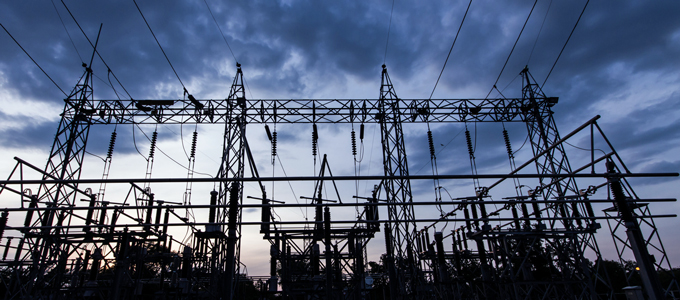THOUGHT LEADERSHIP
Do you have the right SCADA strategy for your business?
Installing a SCADA system is a major outlay. With the ever-increasing pace of technological change, how can you ensure your new system or upgrade will repay your investment and deliver maximum benefits?
It’s almost impossible to imagine running a business in the power or water sector without SCADA and automation. The significance of the benefits of visibility and automation of plant and processes, particularly for remote assets, is unquestionable. However, to get the best return on your investment, your system needs to be functioning at its best.
Loss of SCADA means loss of visibility, production, time and money, but basic functionality is not enough. If your SCADA system is functional but not optimal, it is still opening you to risk . You could be missing out on valuable opportunities to increase your business efficiency, make smarter decisions and continuously improve your processes to achieve less downtime and more effective maintenance.
This means that any new system needs to be reliable, up to date, and future proofed – able to be effectively expanded and updated to accommodate developments in technology and changes in your business. And, for an older system, it means that you need to assess whether your system is still meeting your requirements or if it could be upgraded to do more for your business and protect you against risks. If an older system is still reliable and robust, you may not need to retire it or make wholesale changes.
Choosing a new system or approaching an upgrade
The first step is to explore and understand your options in the context of your business strategy. The right system isn’t necessarily going to be the one that is the latest trend or has the most bells and whistles – it will be the one that is best suited to the particulars of your business and your business goals.
Consider these questions:
- What are your short-term and long-term business objectives? Is the system you are considering consistent with these objectives?
- What can the available technology or systems do for your business today? For example, how will the technology or system eliminate or reduce current inefficiencies and costs?
- What is the potential of emerging technology to meet your future needs? For example, what smart functionality might really help your business over the long haul? Could improvements in modern SCADA systems be able to automate more tasks, integrate with other systems, or streamline reporting?
Before you acquire a SCADA system, fully explore the benefits of a comprehensive strategy to manage the system over its lifecycle, taking into account the lifecycle costs, benefits, risks and opportunities. Your strategy should also facilitate reliable systems that do not compromise anyone’s safety or wellbeing, that minimise impacts on plant or the environment, and that optimise the value obtained from the system.
As you proceed with the project, you’ll need to consider who will develop your functional requirements and standards for the SCADA system. Don’t buy a specification that was developed for use by other entities. Your requirements and expectations must be documented, and the system needs to meet them. Requirements should support the strategic objectives of your business, addressing key topics such as security, availability, performance and disaster recovery.
Start visualising your planned system through a high-level network diagram detailing interfaces to other business systems, operator stations and to other external links. Then carry out a preliminary gap analysis to identify disconnects between existing and future requirements. This will help you focus your efforts and make informed decisions.
When it comes to deciding on the system, consider procuring ‘off the shelf’ applications and minimising customisation and software development where practical. This may offer savings in the long term when upgrading is required, as some customised functionality may become incompatible with new versions.
Once you’ve selected a vendor or system integrator, consider whether you have the required skills and experience to evaluate their performance and to determine whether the system is being designed and implemented such that it will meet your requirements, standards and expectations. If not, involve someone who can oversee the project technically as ‘owner’s engineer’. Engaging someone skilled in design, implementation and testing will reduce your technical, operational and financial risks.
Planning to retain but improve your existing SCADA system?
It’s likely that there’s still a lot of value in your old SCADA system. To get the most out of your prior investment, try to identify which parts of the system still have worth or could be translated into a new system, and which parts need to be augmented or replaced.
Unreliable, unsupported, obsolete equipment and software should be the first to go; proprietary hardware or software should also be considered for replacement to allow for open connectivity, which will offer you a more flexible system architecture and greater software functionality.
From your old SCADA system, you may be able to retain your SCADA system point database through capturing and documenting it. You might be able to transfer or convert your historical data into the new system. Or you could consider developing your SCADA screens with a level of familiarity to your previous screens. But regardless of what you retain, you’ll require improvements that allow seamless changeover of your operations.
Other important considerations when you’re planning to improve an existing system are cyber security, redundancy, situational awareness and alarm rationalisation.

SCADA systems are too important and too great an investment to risk making the wrong choice . You need to be confident that your investment in SCADA will deliver the greatest level of benefit and reliability over the longest time. The best way to ensure a good decision is by putting in the groundwork to really know what’s available and what’s best for your business. Getting it right will free you up to reap the rewards of greater productivity and profitability.
If you would like to find out more about investing in a new or improved SCADA system, Patrick Pease or Shekhar Prince on +61 412 402 110.
This is the first article in a series on SCADA. In subsequent articles we will explore SCADA replacement and upgrade in more detail, investigate what you need to include in your SCADA system to improve operator safety and increase business efficiencies, and consider the financial case for a SCADA system implementation. Follow us on Facebook, Twitter or LinkedIn for future updates.
MORE THOUGHT LEADERSHIP ARTICLES
17 October, 2017







